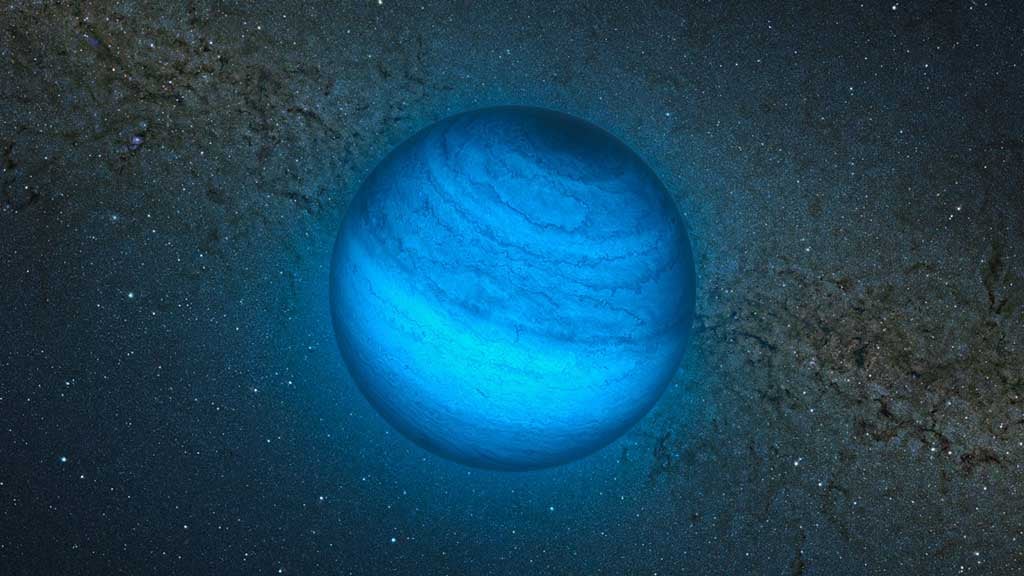This NASA artist’s animation illustrates the technique used for finding free-floating Jupiter-mass planets in space. Astronomers think gravitational interactions ejected such worlds early on from their developing solar systems.
The movie shows the central region of the Milky Way and zooms in on a star that brightens. This brightening (exaggerated here) happens when an unseen planet happens to cross in front of it. The planet’s gravity causes the starlight to warp, and this warping results in a brightening of the star. In essence, the planet’s gravity plays the role of a magnifying lens.
The next part of the animation shows a zoomed in view of the microlensing. The blue dot represents the planet (enlarged to make it easy to see). The main star is the central bright dot. When the planet is directly in front of the main star, that star’s multiple images stretch into arcs. This result is a temporary brightening of the star.
The duration of the microlensing event will reveal the rough mass of the passing body. Jupiter-mass objects will cause a star to brighten more quickly, over just a day or two. A passing star would cause a more-distant star to brighten over a period of weeks. The movie ends with an artist’s conception of a free-floating Jupiter-mass world.
The gravitational microlensing shown is based on simulation data from M. Freeman (University of Auckland, New Zealand).










